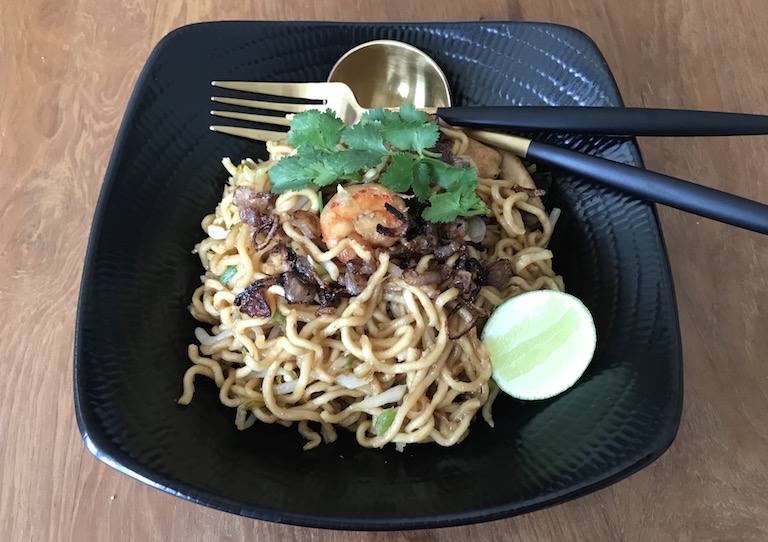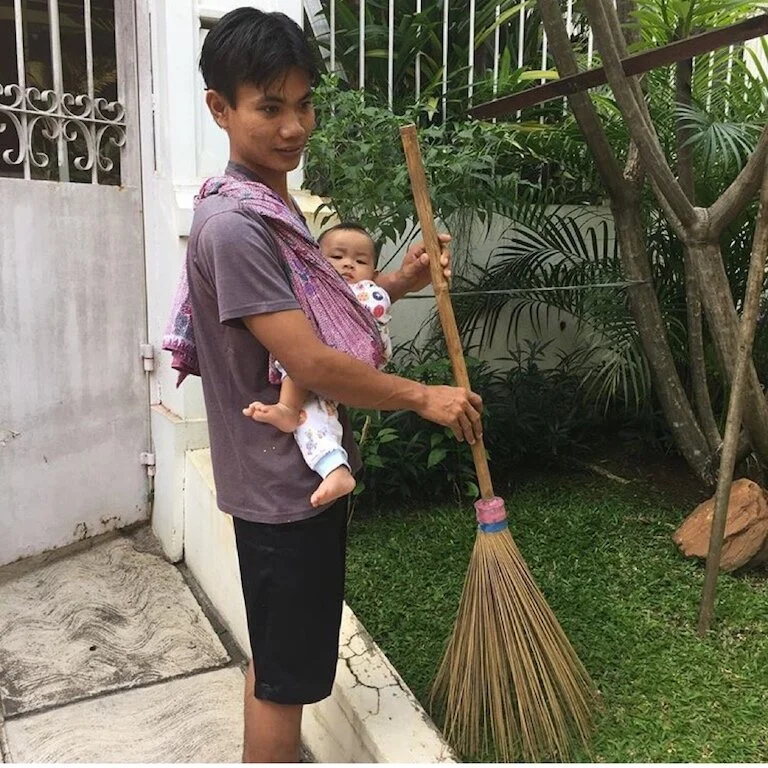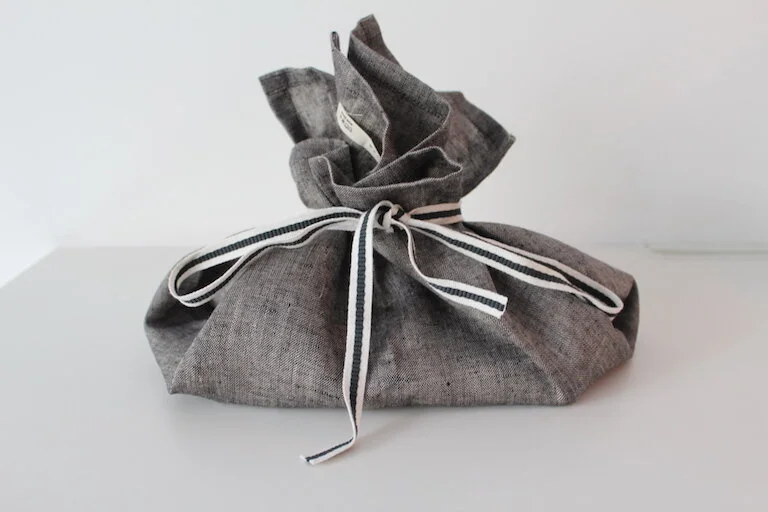How to Make Authentic Mie Goreng
Definitely a comfort food for many Indonesians, Mie Goreng (which translates as ‘fried noodles’) is a staple dish in most Indonesian households, with a different recipe in each home, and many street vendors specialising in their own original version.
Indonesia’s Mie Goreng is derived from the Chinese dish, Chow Mein and is thought to have been introduced to Indonesia by Chinese immigrants. Over time, the dish has been adapted to the Indonesian palate, including the addition of fried shallots, sambal and kecap manis (sweet soy sauce). Unlike the original Chinese recipe, the Indonesian version generally doesn’t include any pork products, catering for the majority Muslim population.
Mostly named after the ingredients in the recipe eg: Mie Goreng Ayam (chicken), Mie Goreng Sapi (beef), Mie Goreng Udang (prawns); the name of the dish may also indicate origin of the recipe eg: Mie Goreng Aceh and Mie Goreng Java.
Street vendor Pak Sunarno has been selling Mie Ayam and other noodle dishes from his 'gerobak' (food cart) in Kemang, South Jakarta, for the past 18 years. Pak's day starts at 8am and he serves his last customer at 8pm. A serving of Mie Ayam costs Rp15000 (about $1.50 AUD)
You can either dine in- or take away at many of the street food carts in Jakarta. Choose take away and your noodles will be handed to you wrapped in waxed paper and tied with string.
However, our favourite naming method for Mie Goreng is based on the sounds that the vendors make as they enter your neighbourhood, letting hungry customers know that they’re close by. 'Mie Goreng Tek-Tek' refers to the sound made when the street hawker hits his wok and is common throughout Jakarta as well as other large cities in Java. Originating in Surabaya (Indonesia's second largest city), 'Mie Goreng Dhog-Dhog' is another famous noodle dish that takes its name from the sound made when a large wooden slit drum is beaten as the vendor approaches each neighbourhood.
Heading along Kemang's main street, my driver spotted another Mie Goreng vendor. As we pulled up close to their 'gerobak' (food cart), I called out from my car, asking to take their photo. They were very obliging but also highly entertained that this crazy foreigner wanted a picture. I love their smiles :)
How to Make Mie Goreng ajb-Style
Ingredients
(5 portions)
300 grams dried egg noodles or 500g fresh noodles
3 cloves garlic
2 candlenuts
1 tsp white peppercorns
200 grams chicken breast (cubed)
200 grams prawns (shelled and de-veined)
100 grams cabbage (sliced thinly)
200 grams bean sprouts
3 spring onions (chopped)
2 lengths of local celery (chopped)
4 Tb kecap manis (Indonesian sweet soy sauce)
Vegetable oil of frying
2 cups chicken stock
The main ingredients for Mie Goreng
Garnish
Coriander
Lime slices
Fried shallots
Some garnish ideas including fried shallots, fresh coriander, limes (jeruk nipis) and chilli (oh, and don't forget some sambal if you like your food with some punch!)
Method
1. Prepare your noodles. If using dry noodles, bring a pot of water to the boil and add the noodles. Prepare as per instructions on the packet (although only cook until al-dente as you will finish cooking the noodles later). If using fresh noodles, run under cool, clean water to ensure noodles separate easily. Drain noodles and put aside for later use.
2. Now onto your protein: Peel, de-vein and rinse the prawns. Set aside. Chop chicken breasts into cubed pieces and lightly fry in vegetable oil until sealed and lightly brown (3-5 minutes). Set aside.
In our Mie Goring recipe, we like to use chicken and prawns, but you can also use beef strips, tofu, tempe and shredded omlette
Browned chicken pieces, ready to be fully cooked when returned to the wok at a later stage
3. Shred cabbage, wash thoroughly and set aside.
4. Chop spring onions and celery. Set aside.
5. Create your simple spice paste by grinding garlic, toasted candlenuts and whole white pepper in a mortar & pestle until a smooth paste is formed.
Indonesia's traditional mortar and pestle is called a 'cobek ulek ulek'. Made from volcanic stone, ingredients are ground using a dragging motion
Making your own spice paste can be a labour of love - but the fresh and fragrant paste that results makes the effort worthwhile
6. Heat cooking oil in a wok or deep frying pan and stir-fry the paste over medium heat. As the paste turns lightly brown and fragrant, add chicken pieces and prawns, tossing until almost cooked.
Fresh Mie Goreng spice paste
After toasting the spice paste, fry off the chicken and prawns
7. Add chicken stock and decrease heat. Allow to boil, reducing the liquid by approx. one third.
Chicken stock that is free of MSG is becoming more easy to find in Jakarta supermarkets. Our 'go to' brand is always Javara Indigenous Indonesia
8. Toss in cabbage & noodles and add kecap manis. Mix well. Add bean sprouts, spring onions, celery and quickly toss to combine. Taste and add more kecap manis if desired.
9. Garnish with fried shallot flakes, chopped coriander and lime wedges and a side portion of your favourite Indonesian sambal if you like hot! hot! hot! (We think *Sambal Belacan is a good choice for this dish).
Selamat Makan Teman Kami! (Enjoy your meal, Friends!)
Cook’s Notes
To create a more filling meal, add a fried egg, chicken satay or some fried tofu.
Add some extra chilli to amp-up the heat factor - either as freshly sliced chilli or a few shakes of chilli flakes. For many Indonesians, a meal is incomplete without some spicy *sambal on the side. To give you an idea of its significance, sambal is equivalent to the Aussie tomato sauce (it's THAT important!) *Sambal Belacan is a good choice with this dish and is made from 3 essential ingredients – red chillies, belacan (shrimp paste), and lime juice.
Top your noodles with a fried egg for an authentic Mie Goreng experience!
Other famous noodle dishes from around the Asian region
Pad Thai - Thailand
Ramen - Japan
Pho - Vietnam
Chow Mein - China
Laksa - Malaysia
Japchae - South Korea
Bakso - Indonesia
Hokkien Mee - Singapore
Khao Piak Sen - Laos
Mohinga - Burma
Dine in - using traditional mangkok ayam bowls..
.. or take away (di bungkus), complete with all these extra condiments & accompaniments. It's your choice!
A drawer full of noodles!
Love cooking (and eating)? Try some more of our tasty recipes - all celebrating ingredients that are readily available in Indonesia.
How to make Rujak Buah-Buahan
How to make Martabak Manis
How to make Sweet & Spicy Marinated Chicken
How to make stir fried Manadonese-Style Papaya Flowers
Words: Jo Stevens Photography: a journey bespoke
























